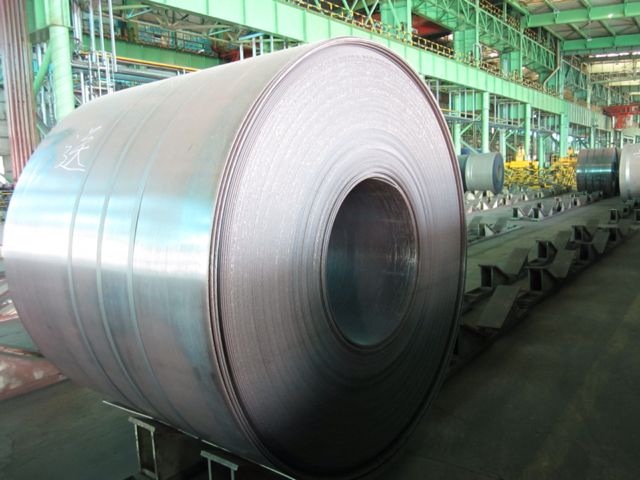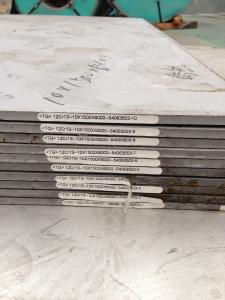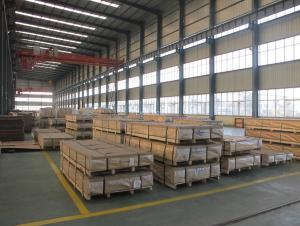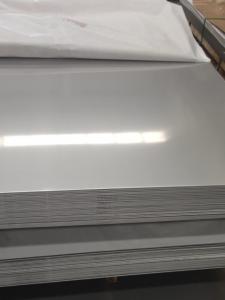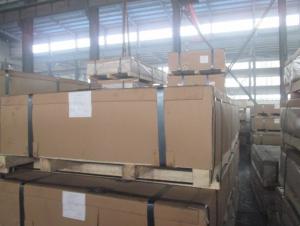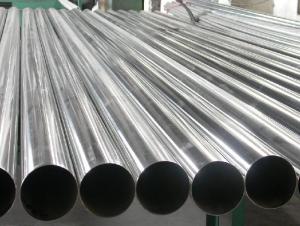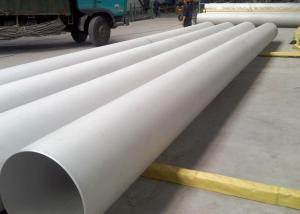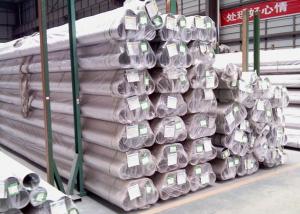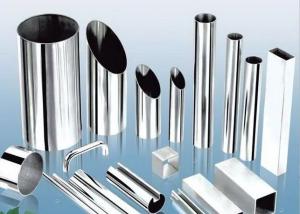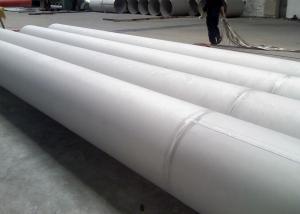Stainless Steel Cold Rolled Plates Stocks With Best Price
- Loading Port:
- Shanghai
- Payment Terms:
- TT or LC
- Min Order Qty:
- 5 m.t.
- Supply Capability:
- 5000 m.t./month
OKorder Service Pledge
OKorder Financial Service
You Might Also Like
1.Structure of Product Description
Stainless steel sheet, stainless steel plate, stainless steel slabs are all widely used in the field of construction field and decoration field, etc. There are many different grades, such as: 200 series, 300 series, 400 series, 900series, etc. The detailed grade are as follows: 201, 202, 301, 304, 316, 410, 420, 430, etc.
The surface is including 2B, BA, Mirror Finish, Checkered, etc.
2. Main features of the product
a. Competitive price
b. Frist-Class Service.
c. Shortest service.
3. Image.
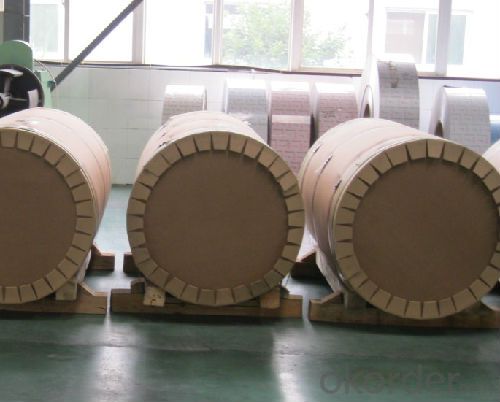
4. Product detailed sizes:
1000mm*2000mm,1250mm*2500mm,1500mm*3000mm, etc.
5. FAQ:
What is the quality standard?
---Usually our standard is GB3880-2006 or else.
What is the width range?
---Normally it is around 3 tons/each size.
How many tons did you export in one year?
---Normally it is around 9000 tons totally.
Where is your client from?
---Normally it is from Japan, USA, ENGLISH, SINGAPORE, ETC.
What is your mainly products?
---Normally they are stainless steel sheet, stainless steel coil, stainless steel checkered sheet, stainless steel mirror finished sheet, color coated stainless steel sheet, etc.
- Q: 304 how can the water stain on the surface of stainless steel plate be formed?
- If you want to scrub the proposal as soon as possible processing, water Jiyue long more difficult to wear off, if it is ferrite, also easy to rust.
- Q: Can stainless steel sheets be used for storage containers?
- Yes, stainless steel sheets can be used for storage containers. Stainless steel is a durable and corrosion-resistant material, making it suitable for storing various items safely and maintaining their integrity.
- Q: Can stainless steel sheets be used for heat transfer applications?
- Yes, stainless steel sheets can be used for heat transfer applications. Stainless steel is known for its excellent heat transfer properties, making it a popular choice for various applications where heat transfer is required. Its high thermal conductivity allows for efficient transfer of heat, ensuring that heat is evenly distributed across the surface. Additionally, stainless steel is also resistant to corrosion and oxidation at high temperatures, making it suitable for use in heat transfer applications that involve exposure to extreme heat or corrosive environments. Overall, stainless steel sheets are a reliable and durable option for heat transfer applications.
- Q: Can stainless steel sheets be used for architectural column covers?
- Yes, stainless steel sheets can be effectively used for architectural column covers due to their durability, strength, and aesthetic appeal. Stainless steel offers excellent corrosion resistance and can withstand various weather conditions, making it a suitable material for outdoor applications. Additionally, stainless steel sheets can be customized to achieve different finishes and designs, providing architects and designers with flexibility in creating visually appealing column covers.
- Q: What are the main chemical constituents of stainless steel plates?
- Stainless steel is often divided into martensitic steel, ferritic steel, austenitic steel, austenitic ferrite (duplex) stainless steel and precipitation hardening stainless steel according to the state of the organization. In addition, can be divided into components: chromium stainless steel, chromium nickel stainless steel and chromium, manganese, nitrogen, stainless steel and so on.
- Q: What are the benefits of using embossed stainless steel sheets in elevator doors?
- Using embossed stainless steel sheets in elevator doors offers several advantages. Firstly, the embossed pattern enhances the aesthetic appeal of the elevator interior, creating a luxurious and sophisticated atmosphere for passengers. Secondly, these sheets are highly durable and resistant to scratches, dents, and corrosion. Elevator doors are prone to damage due to frequent use, but the use of embossed stainless steel sheets ensures that the doors remain in pristine condition for a longer time. This durability reduces maintenance and replacement costs over the elevator's lifespan. Additionally, embossed stainless steel sheets provide a high level of hygiene. The inherent resistance of stainless steel to bacteria and germs makes it an ideal material for elevator doors. The embossed pattern also helps hide fingerprints and smudges, ensuring that the doors stay clean and sanitary with minimal maintenance. Moreover, embossed stainless steel sheets offer excellent fire resistance properties. In case of a fire, these sheets help contain the flames and prevent the spread of fire, providing an added level of safety for passengers in the enclosed space of the elevator. Lastly, embossed stainless steel sheets are easy to clean and maintain. With their smooth surface and resistance to stains and dirt, these sheets can be easily wiped down with a mild cleaner, saving time and effort in the cleaning process. In conclusion, the benefits of using embossed stainless steel sheets in elevator doors include improved aesthetics, durability, hygiene, fire resistance, and ease of maintenance. These advantages make embossed stainless steel sheets a popular choice for elevator manufacturers and building owners alike.
- Q: What is the density of stainless steel sheets?
- The density of stainless steel sheets typically ranges from 7.9 to 8.0 grams per cubic centimeter.
- Q: Can stainless steel sheets be used for soundproofing?
- Yes, stainless steel sheets can be used for soundproofing to a certain extent. While stainless steel itself is not a soundproofing material, it can be used as part of a soundproofing system. Stainless steel sheets can be installed as a barrier to block or reflect sound waves, reducing the amount of noise that passes through. However, for effective soundproofing, additional materials such as acoustic insulation and mass-loaded vinyl are typically used in conjunction with stainless steel sheets.
- Q: Can stainless steel sheets be used for electrical or electronic applications?
- Yes, stainless steel sheets can be used for electrical or electronic applications. Stainless steel has excellent corrosion resistance and high temperature resistance, making it suitable for various electrical and electronic components like enclosures, connectors, and circuit boards. Additionally, it offers good mechanical strength and can provide electromagnetic shielding in certain applications.
- Q: Can stainless steel sheets be used for signage or lettering?
- Yes, stainless steel sheets can be used for signage or lettering. Stainless steel is a highly durable and versatile material that is commonly used in various applications, including signage. It offers excellent resistance to corrosion, making it suitable for both indoor and outdoor use. Stainless steel sheets can be easily fabricated and cut into different shapes and sizes, allowing for the creation of customized signage and lettering designs. Additionally, stainless steel has a sleek and modern appearance, making it an attractive option for signage in commercial or professional settings. Overall, stainless steel sheets provide a reliable and long-lasting solution for signage and lettering needs.
Send your message to us
Stainless Steel Cold Rolled Plates Stocks With Best Price
- Loading Port:
- Shanghai
- Payment Terms:
- TT or LC
- Min Order Qty:
- 5 m.t.
- Supply Capability:
- 5000 m.t./month
OKorder Service Pledge
OKorder Financial Service
Similar products
Hot products
Hot Searches
Related keywords



